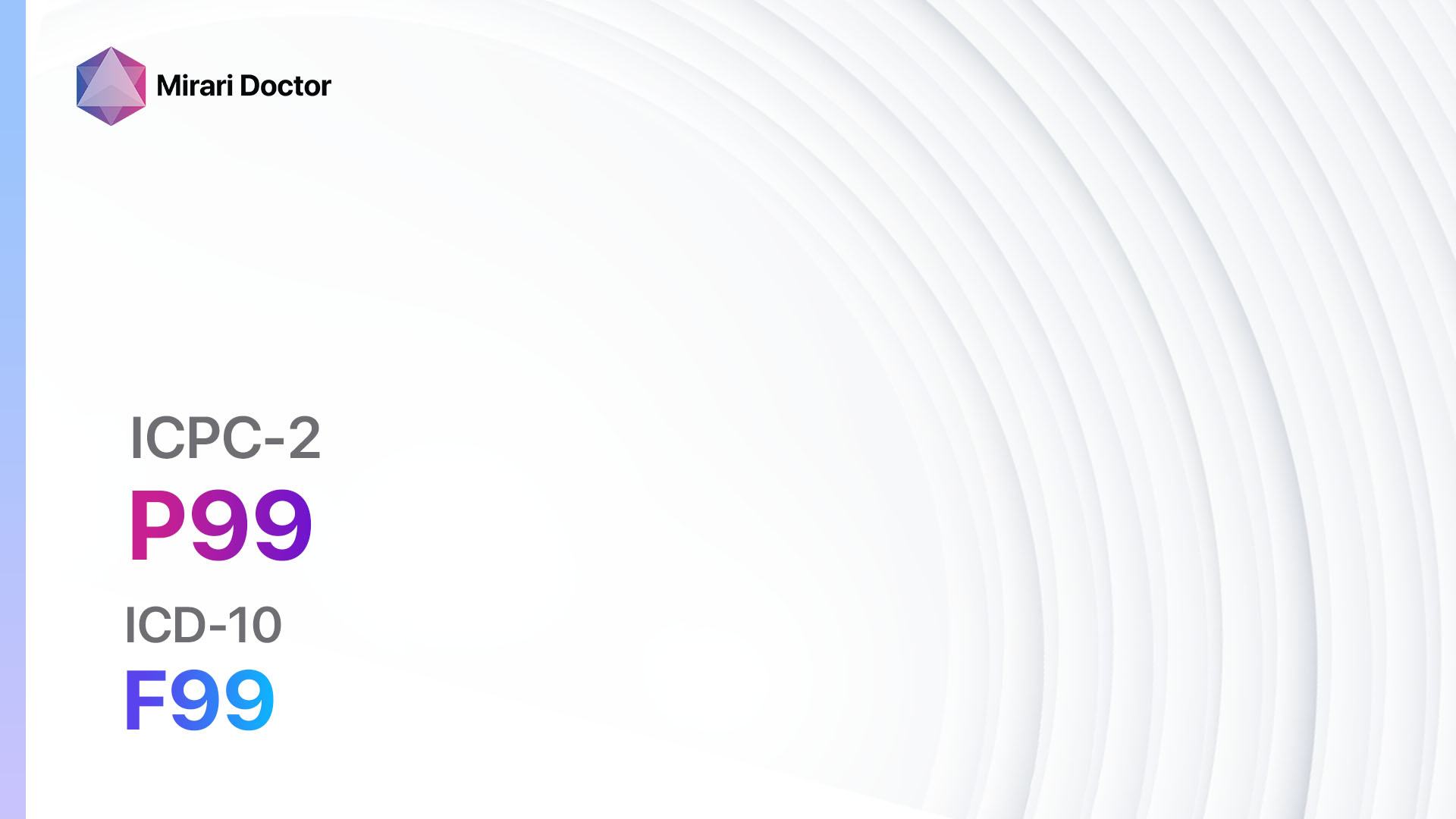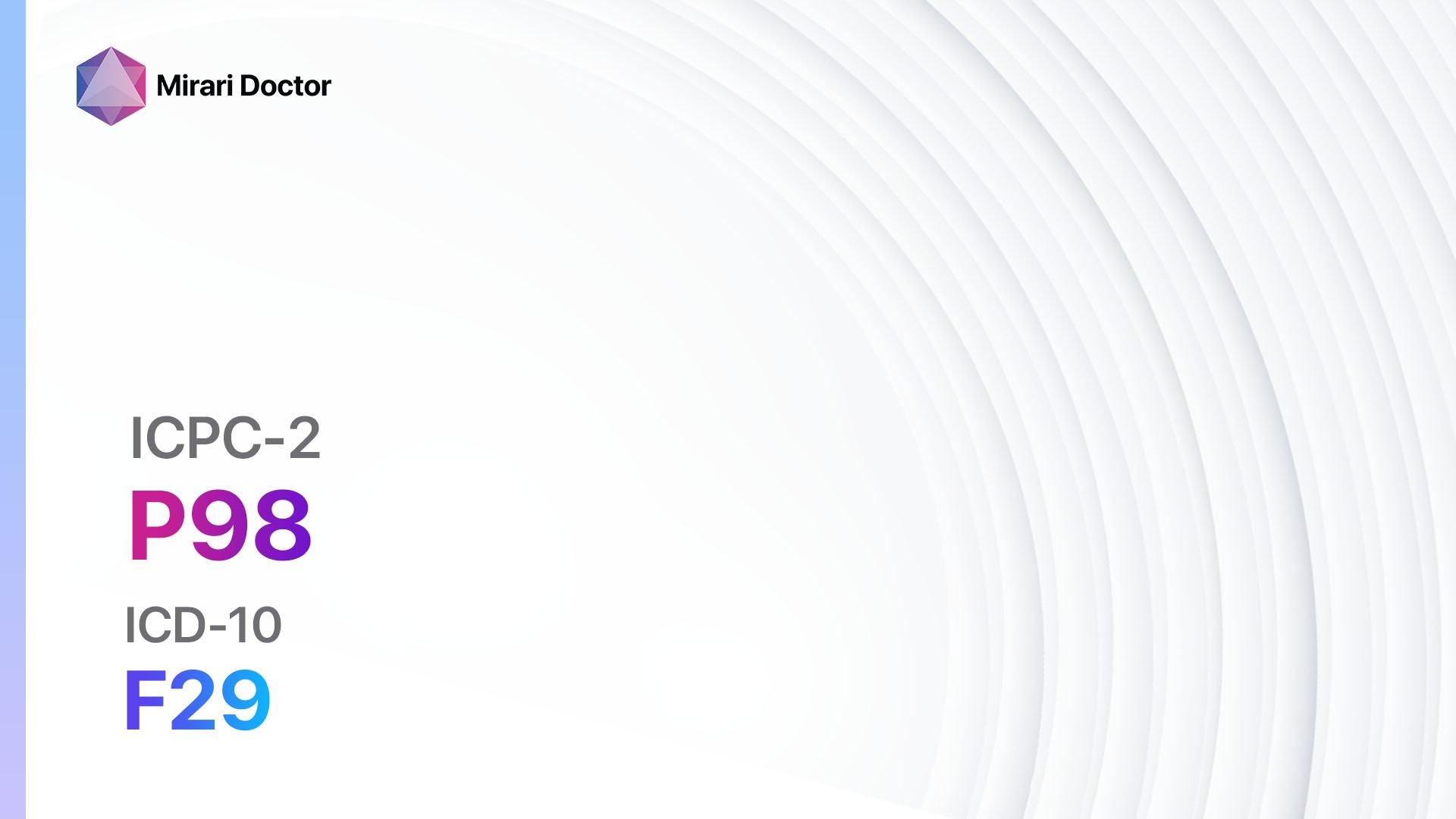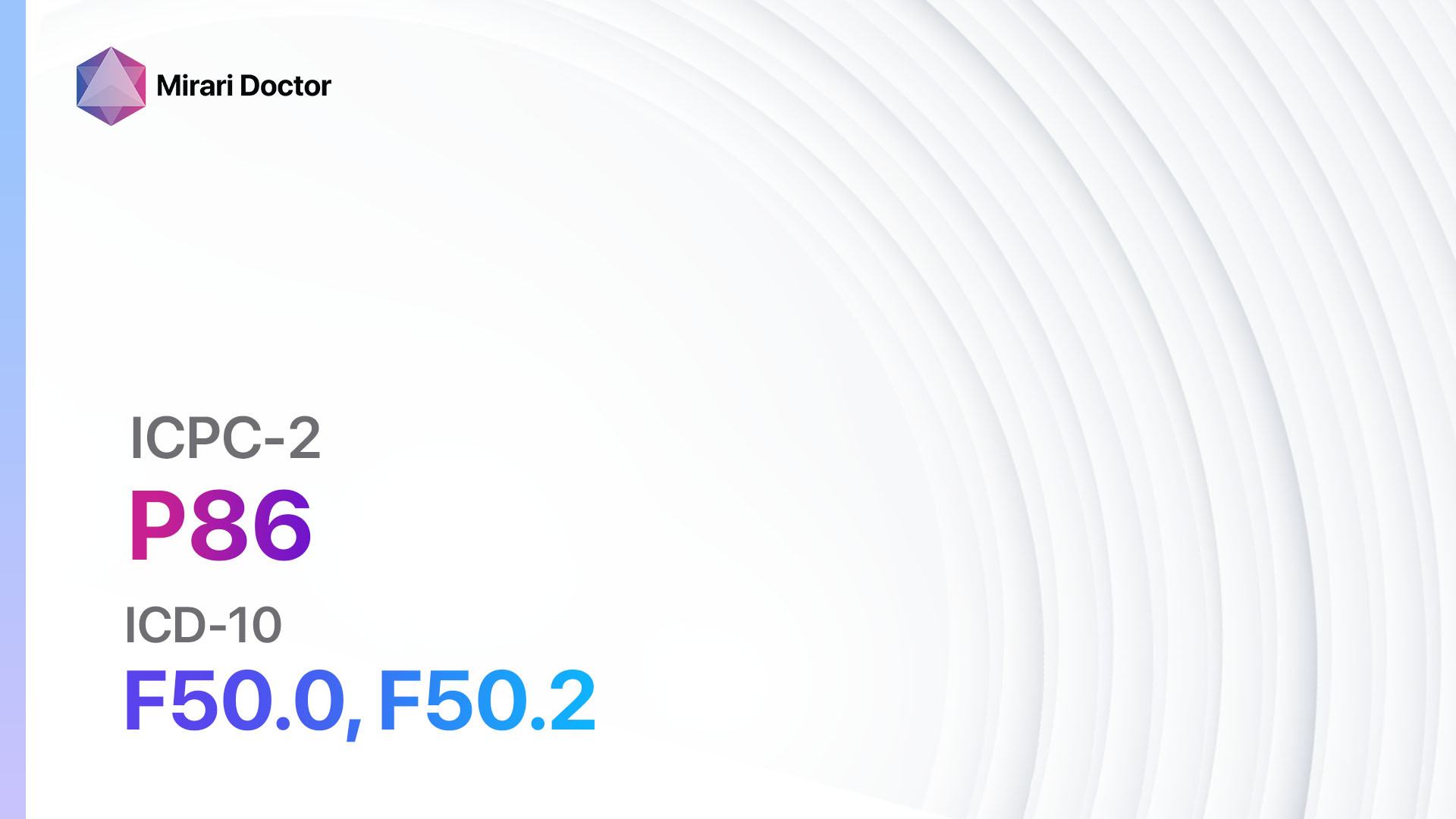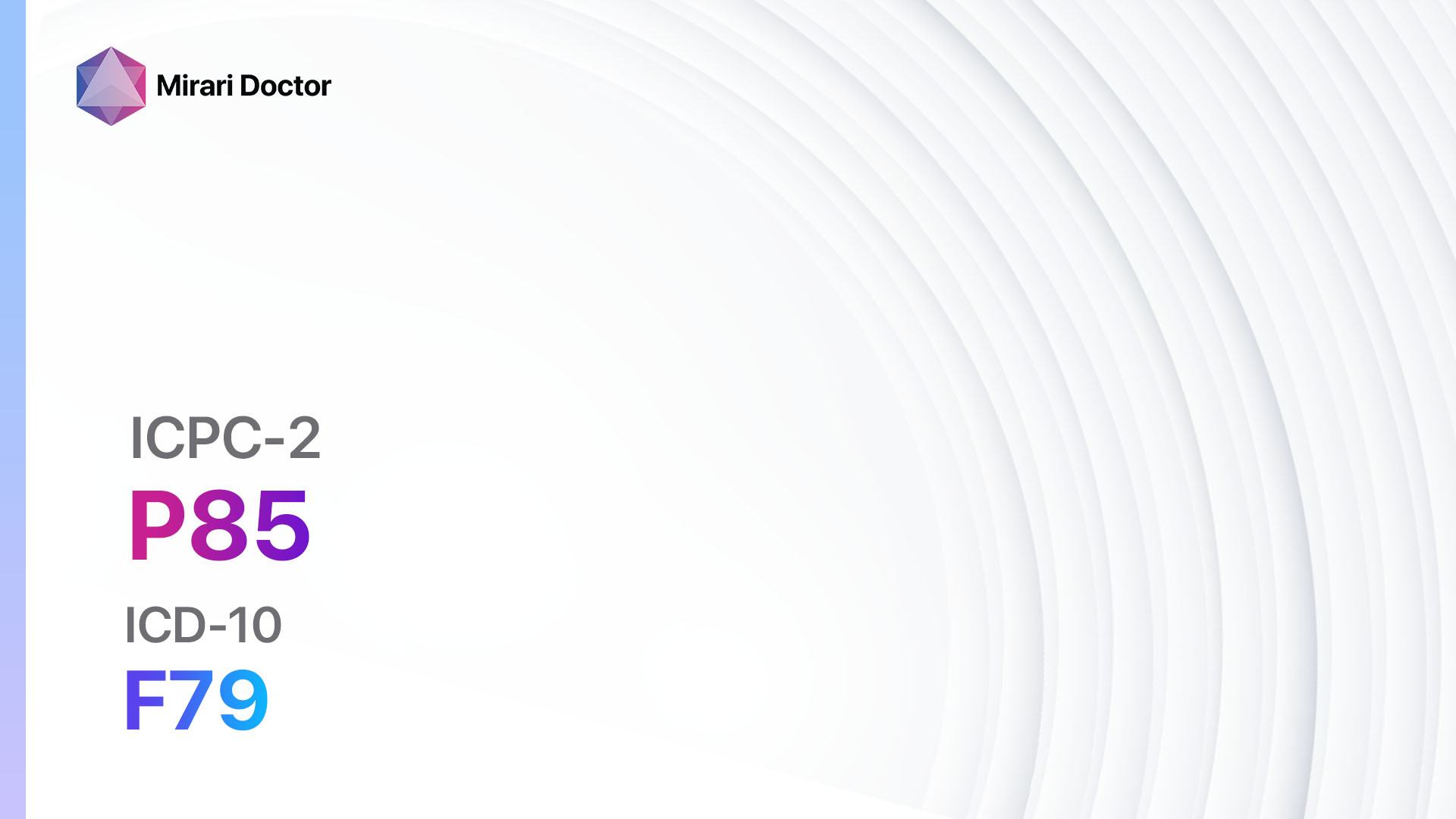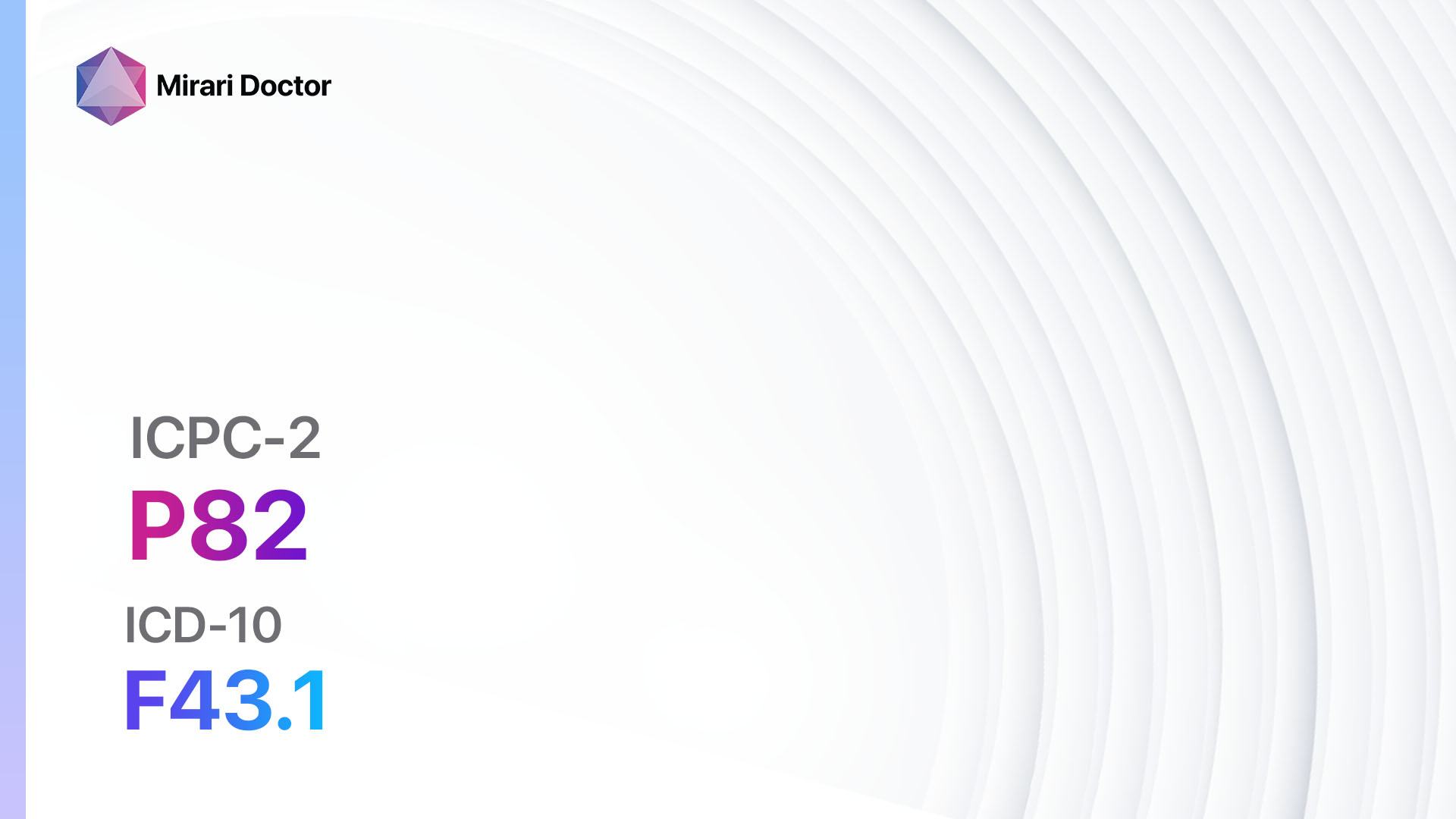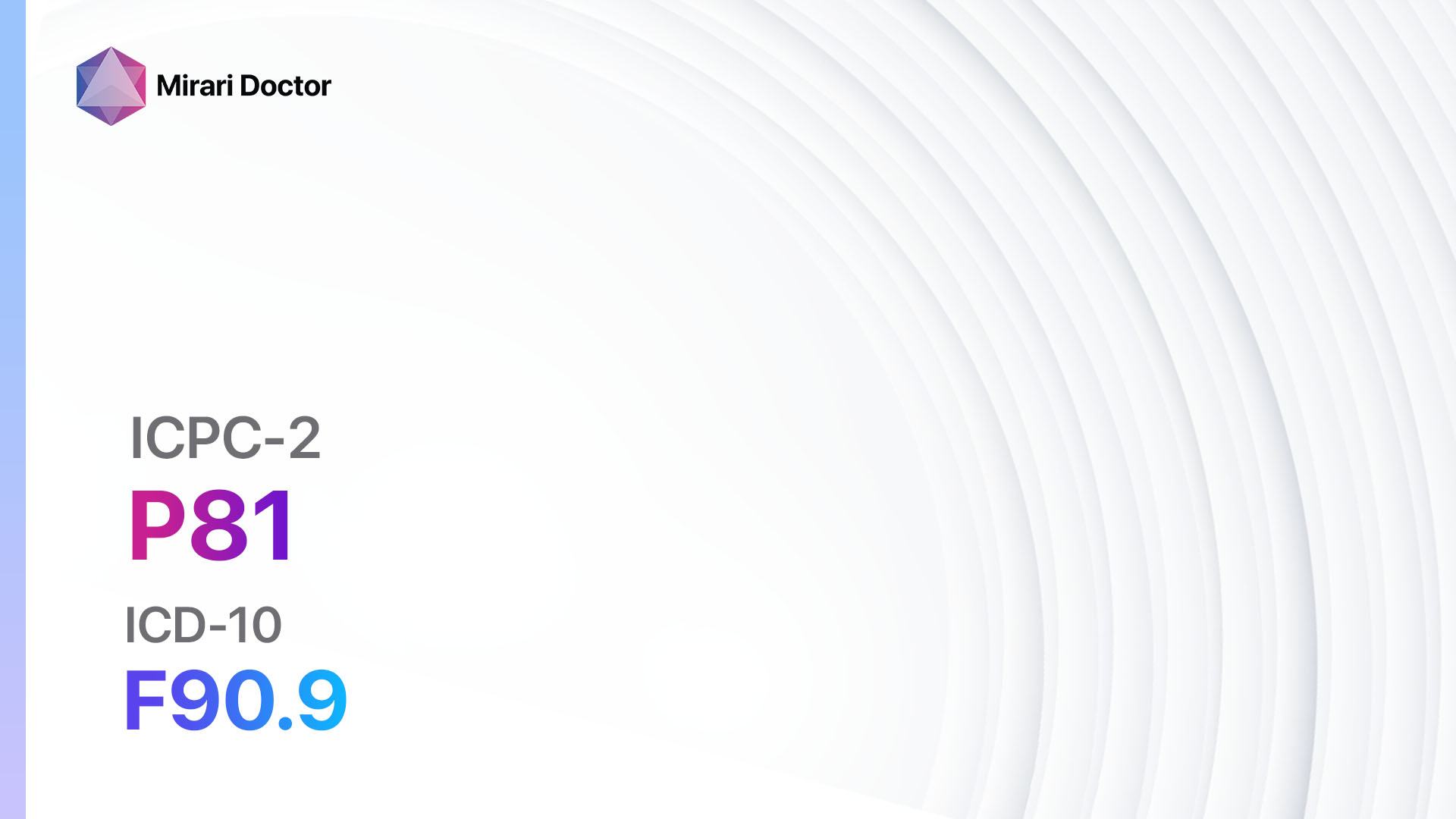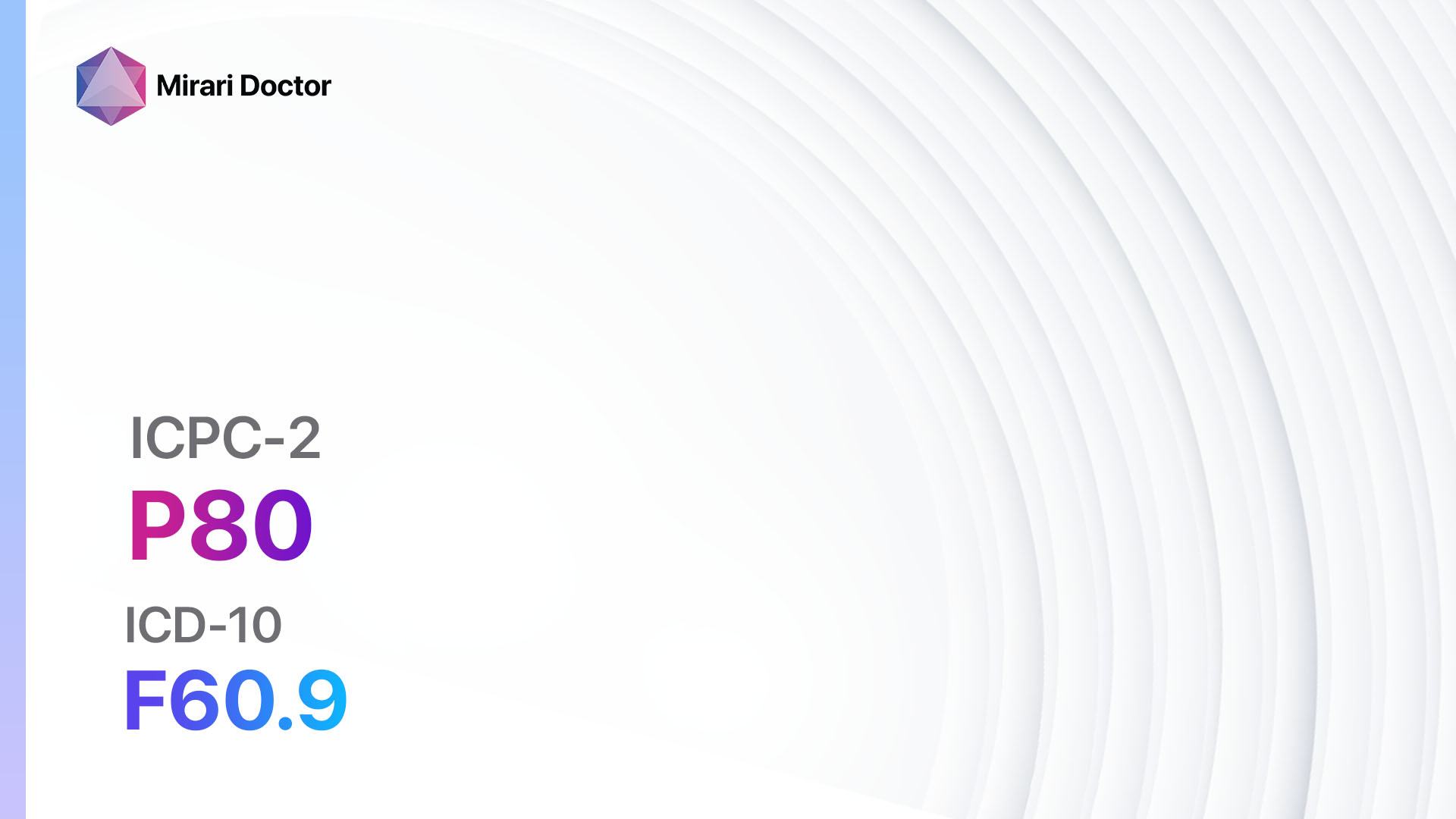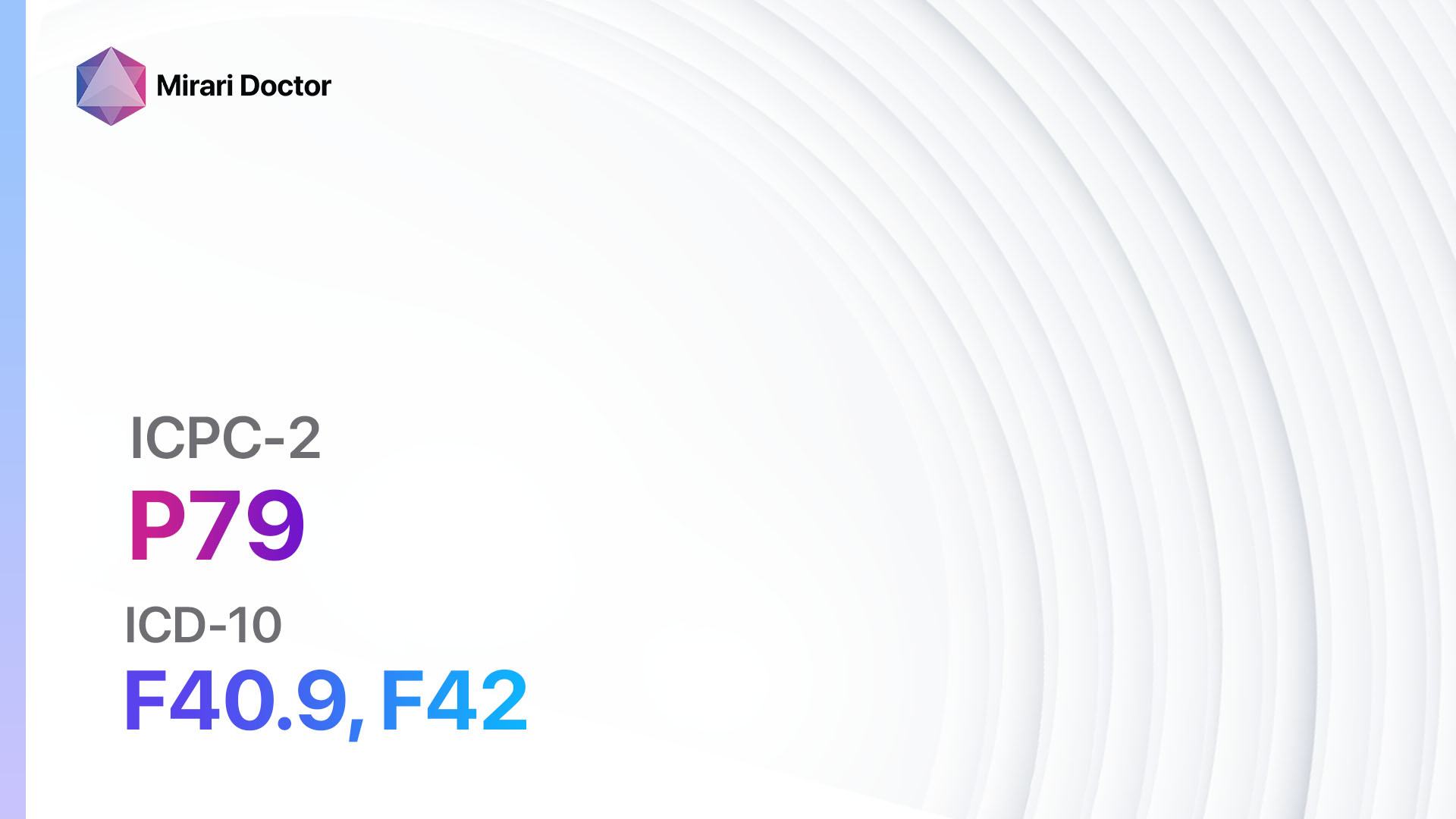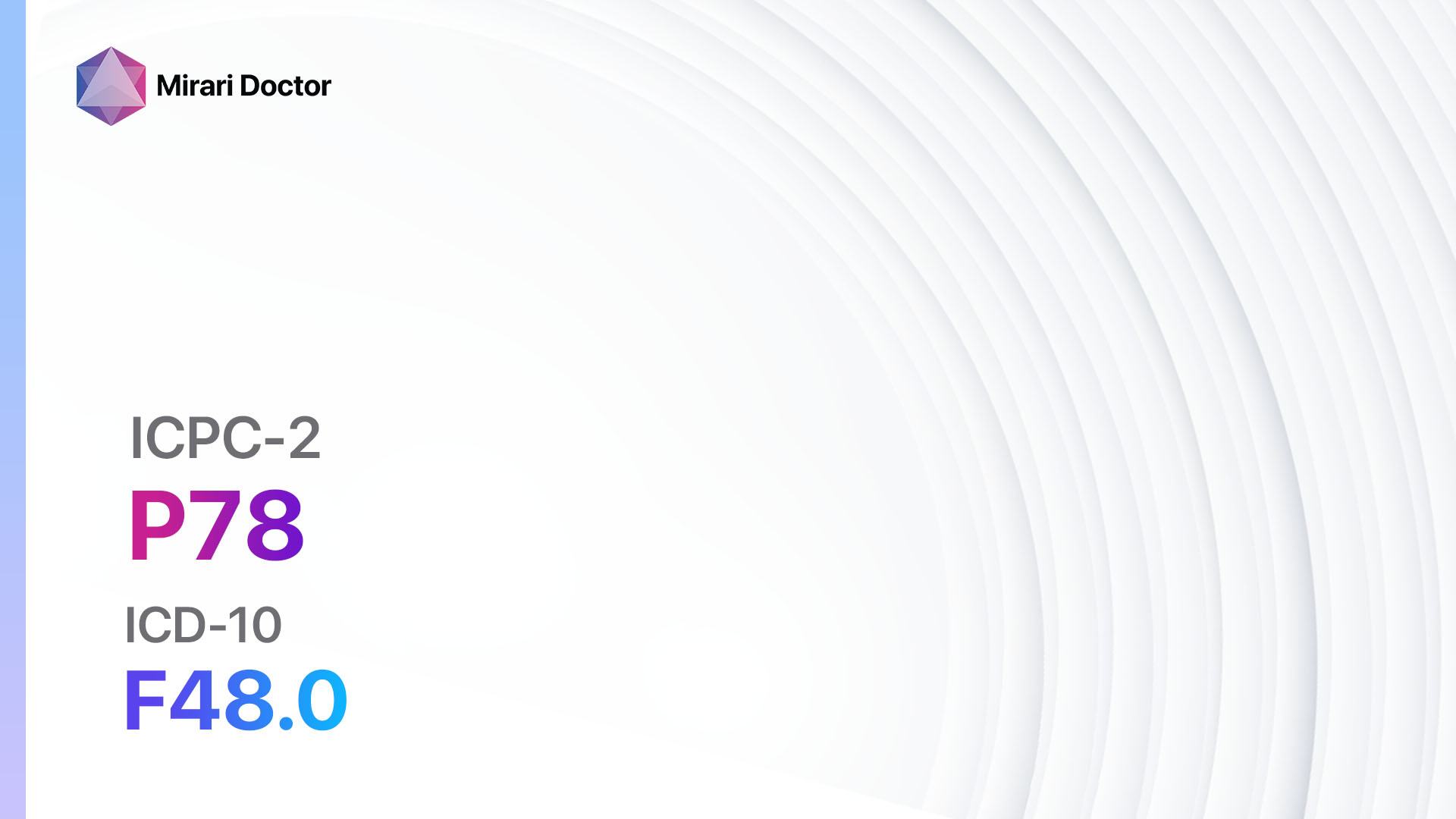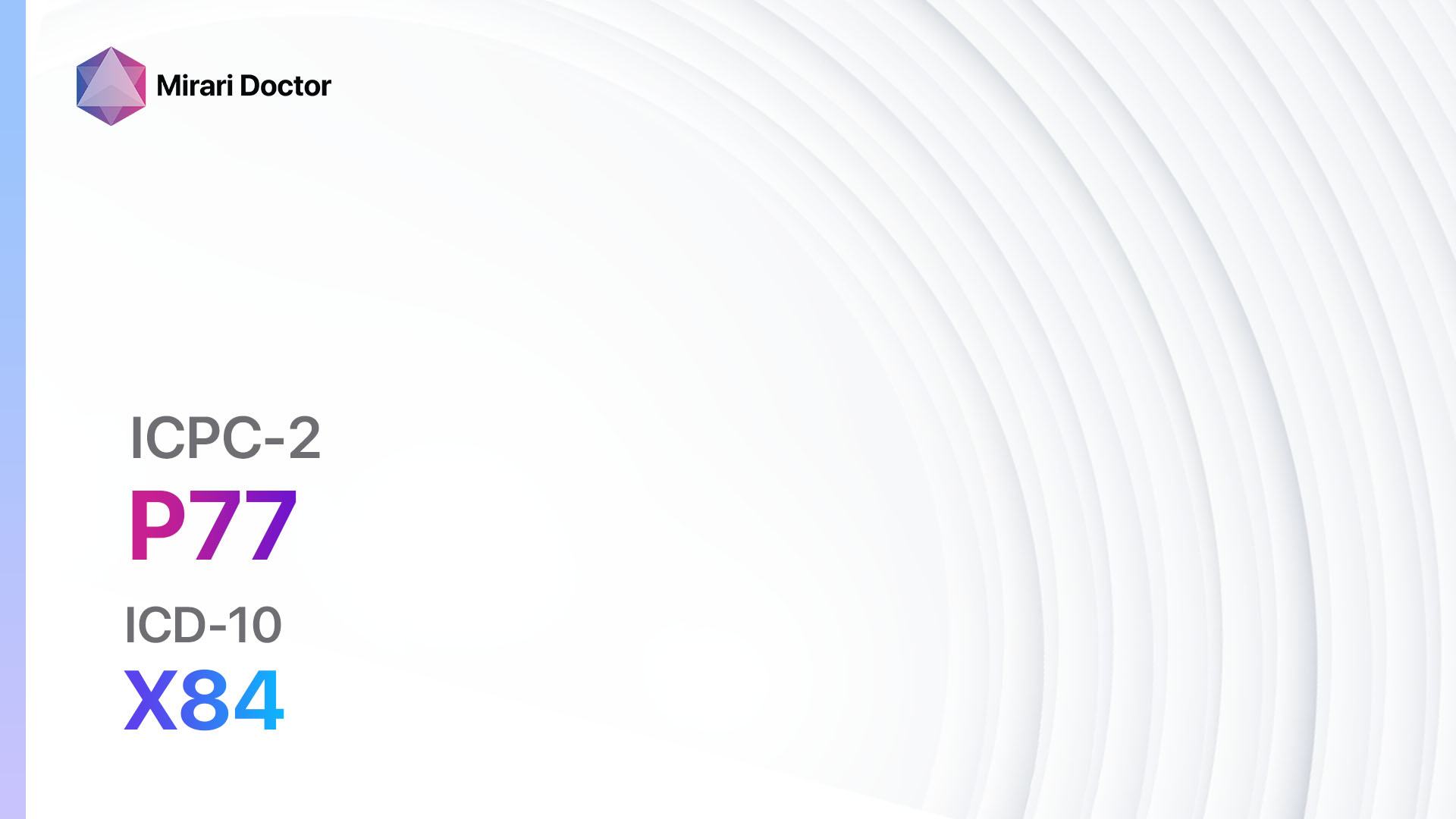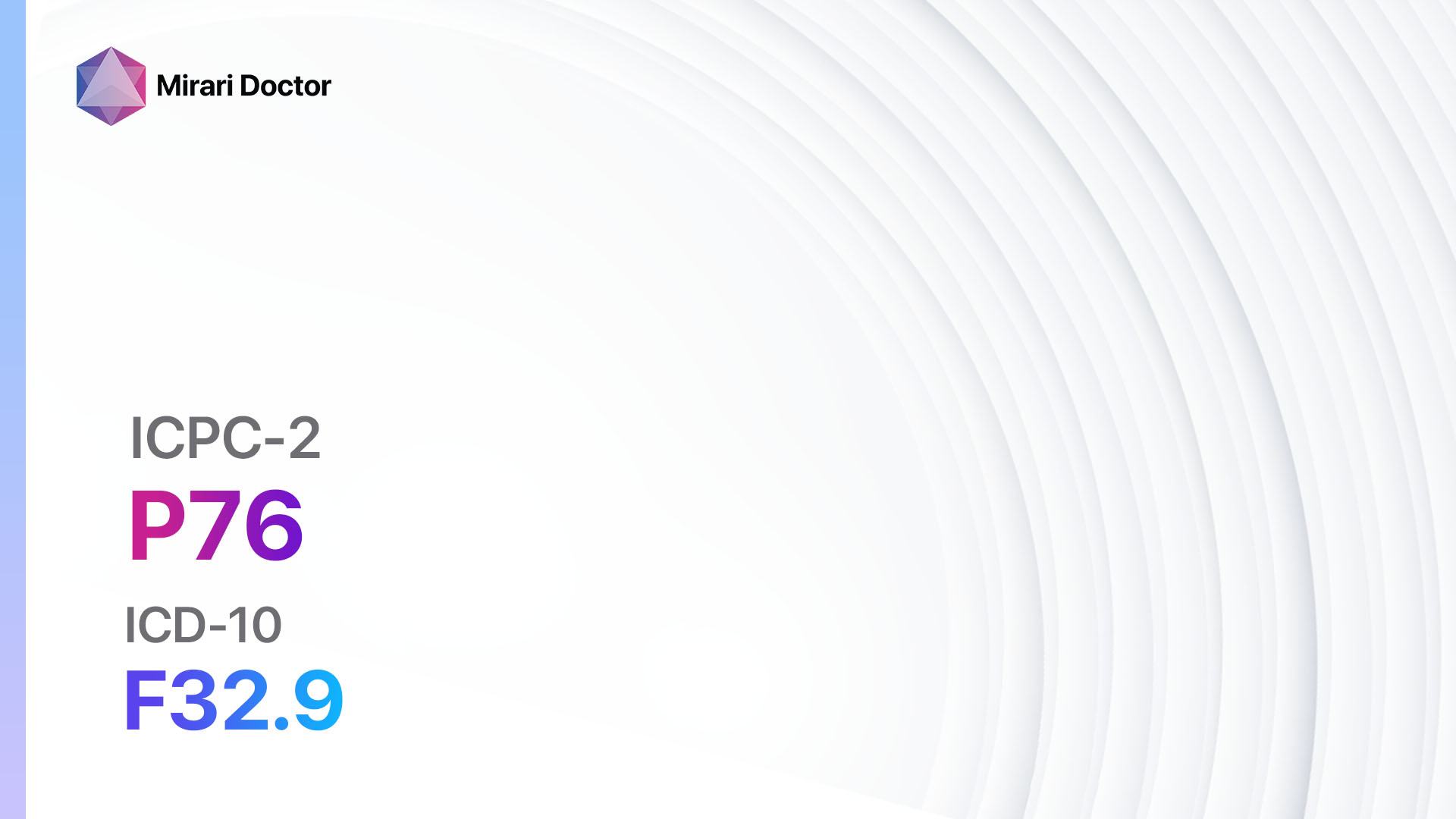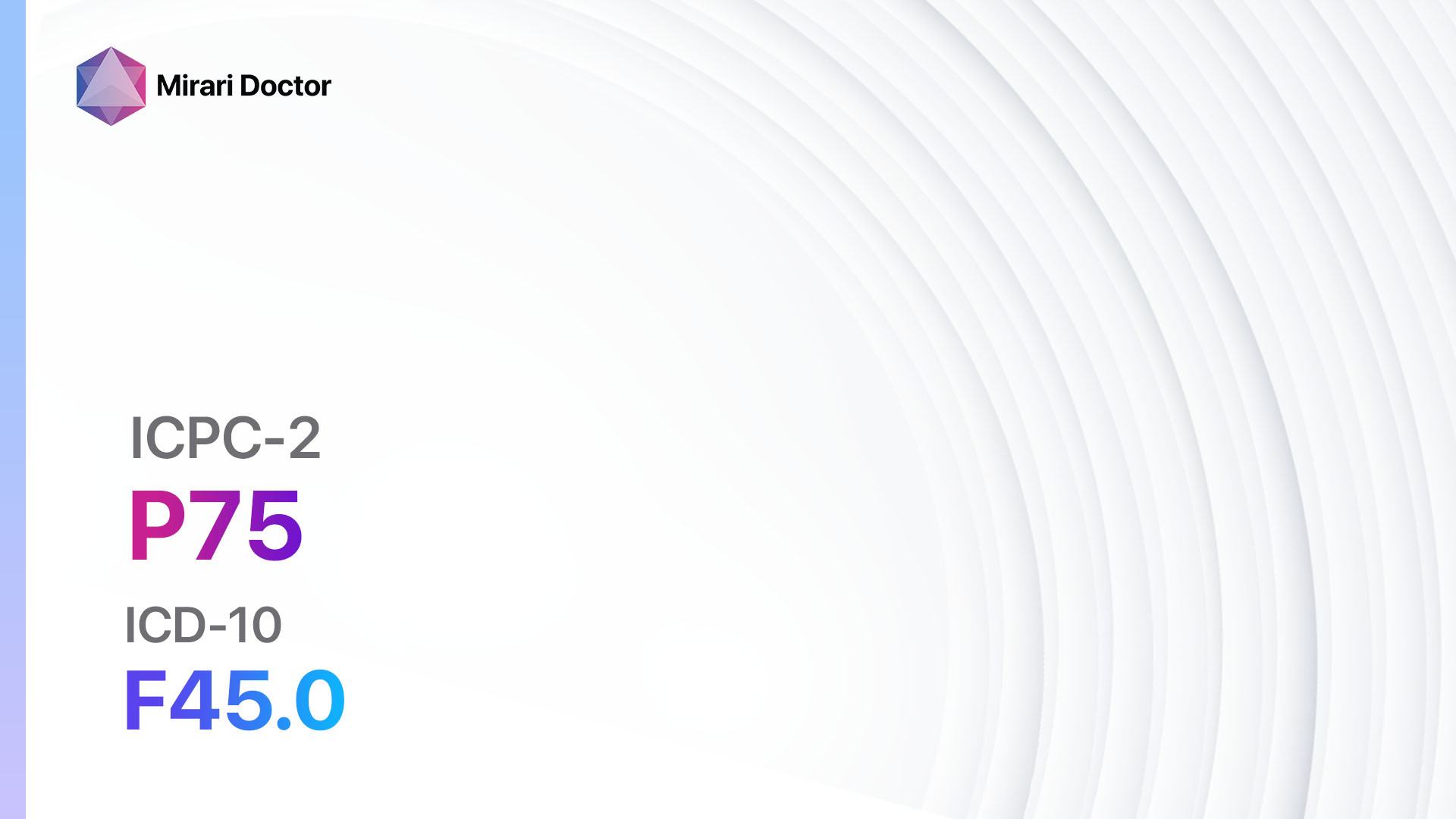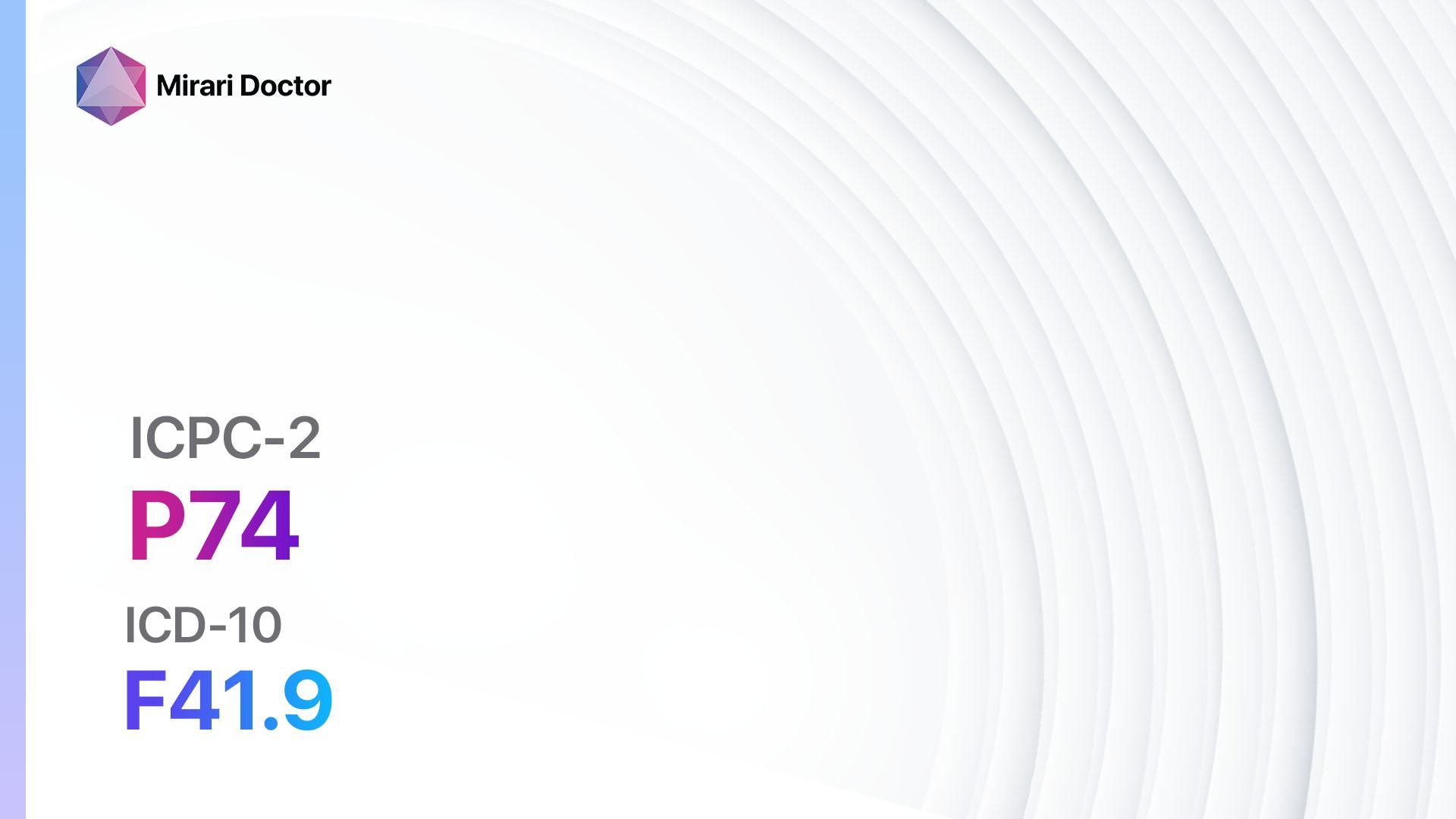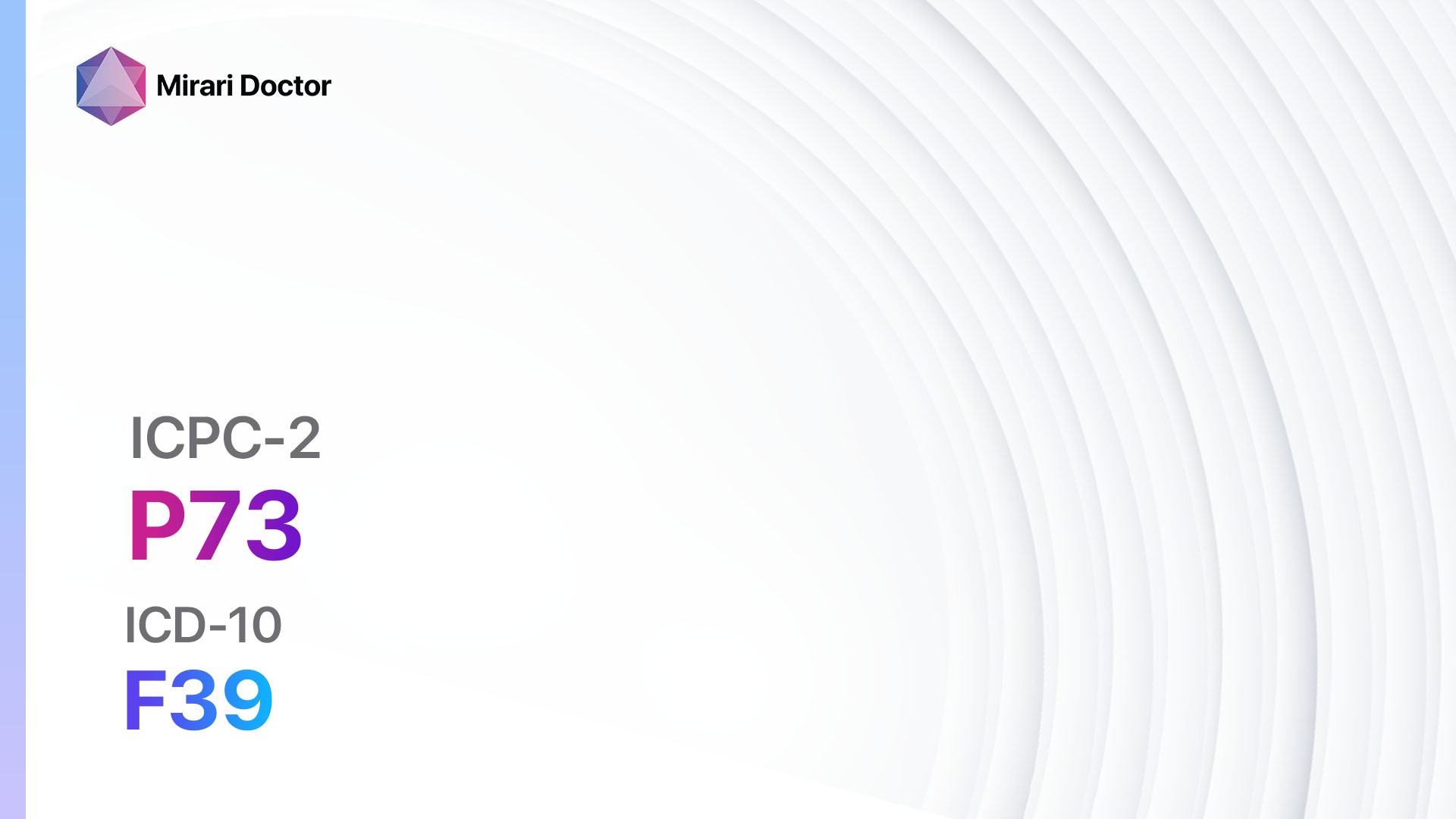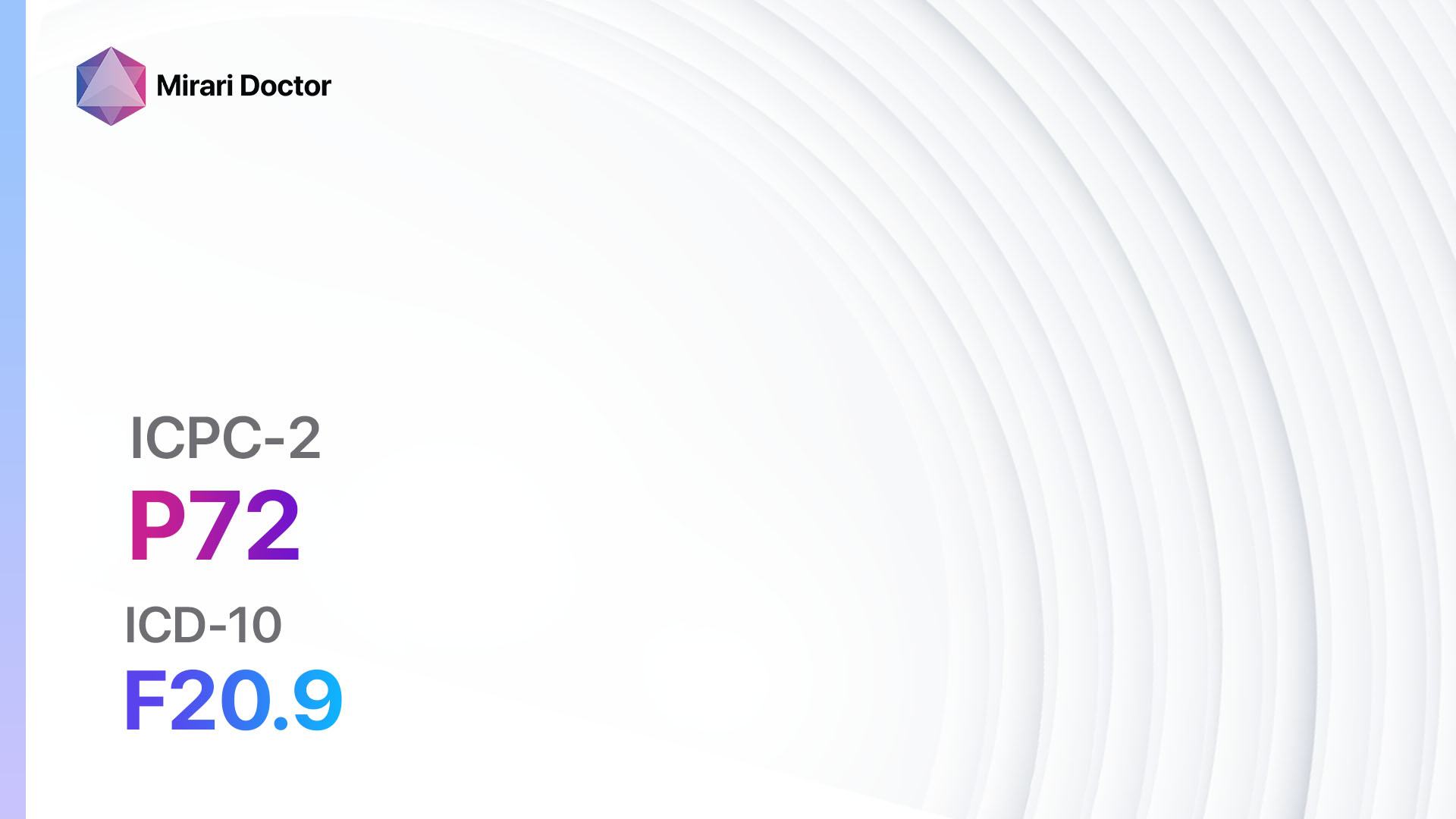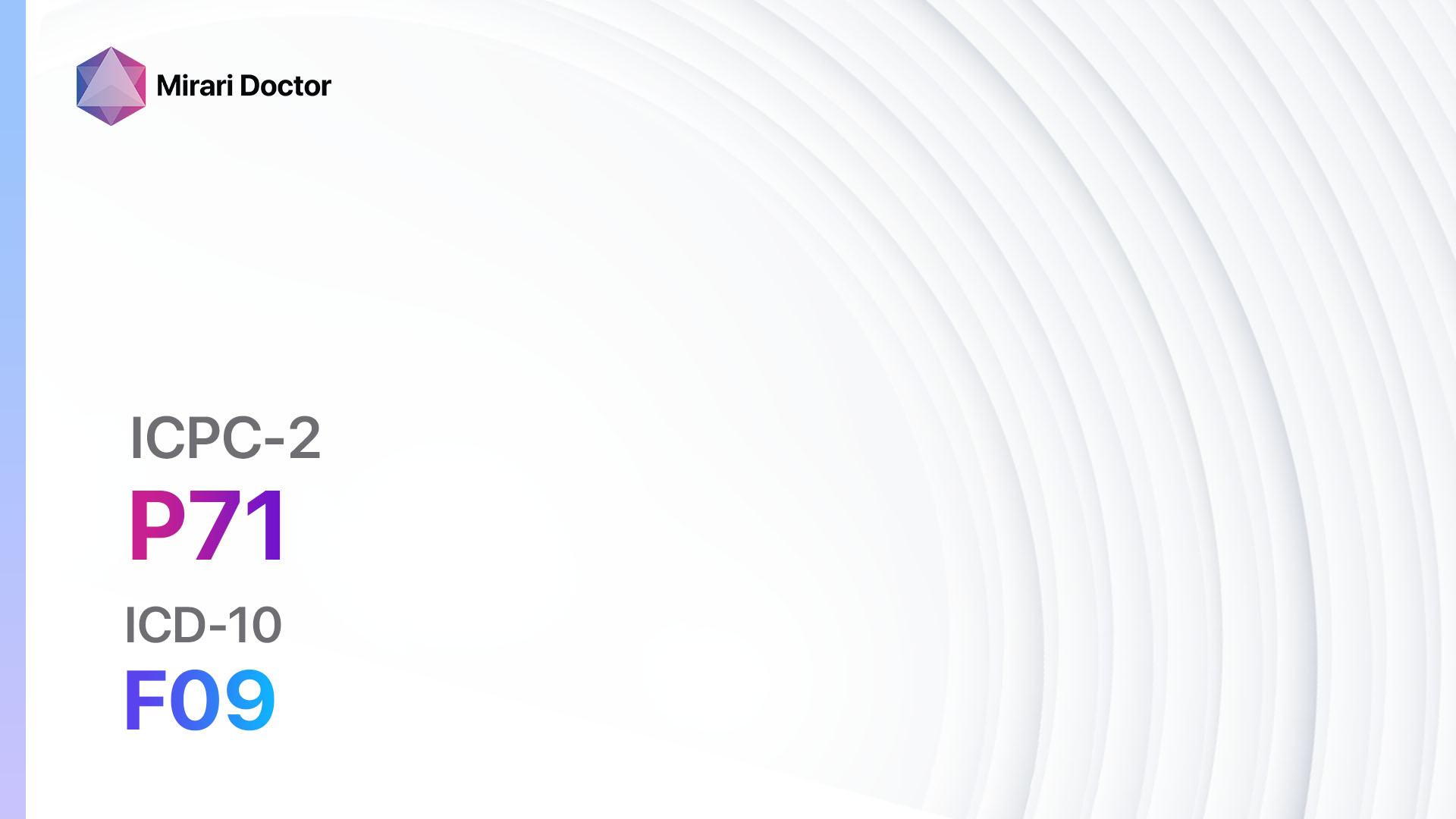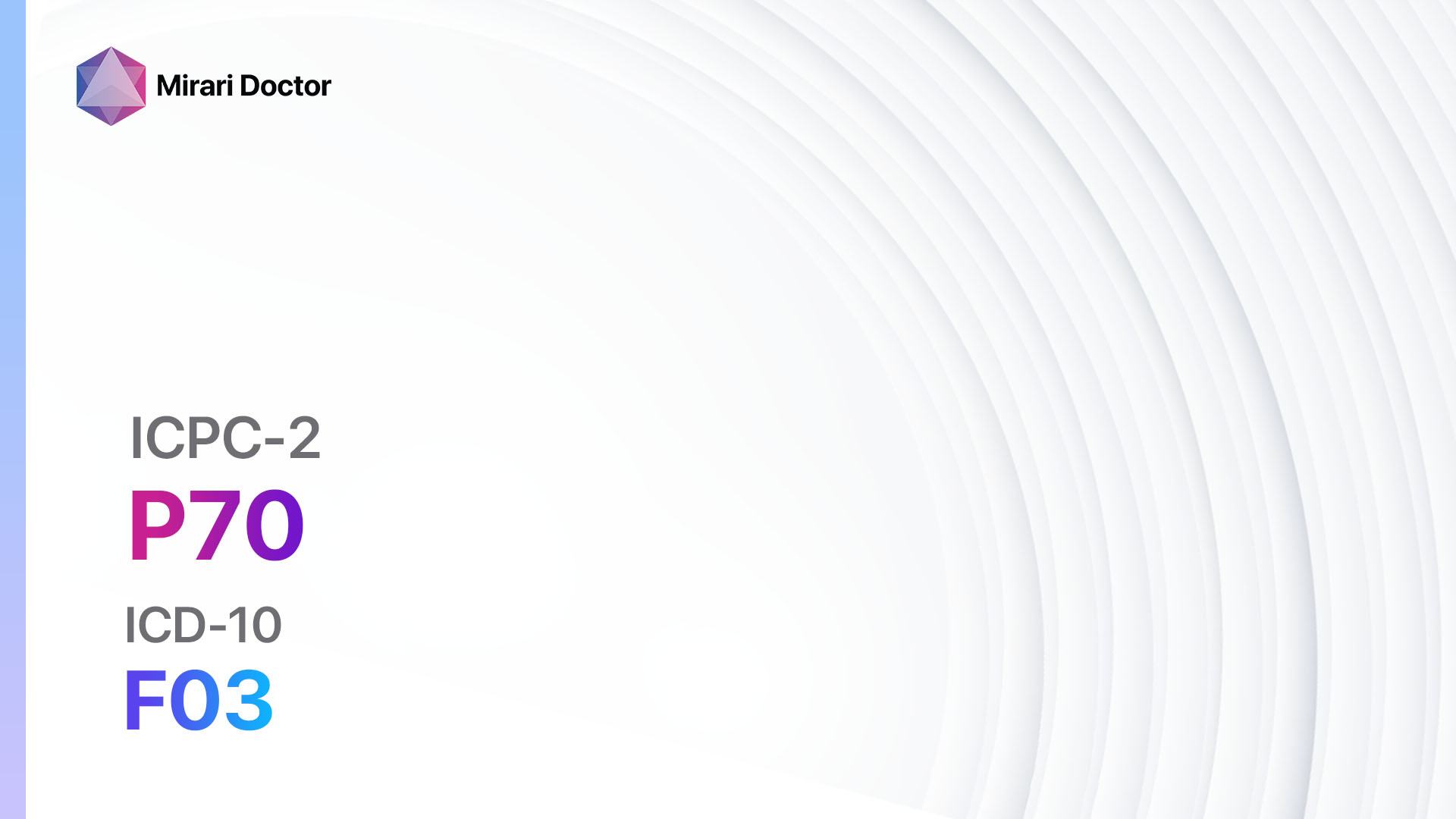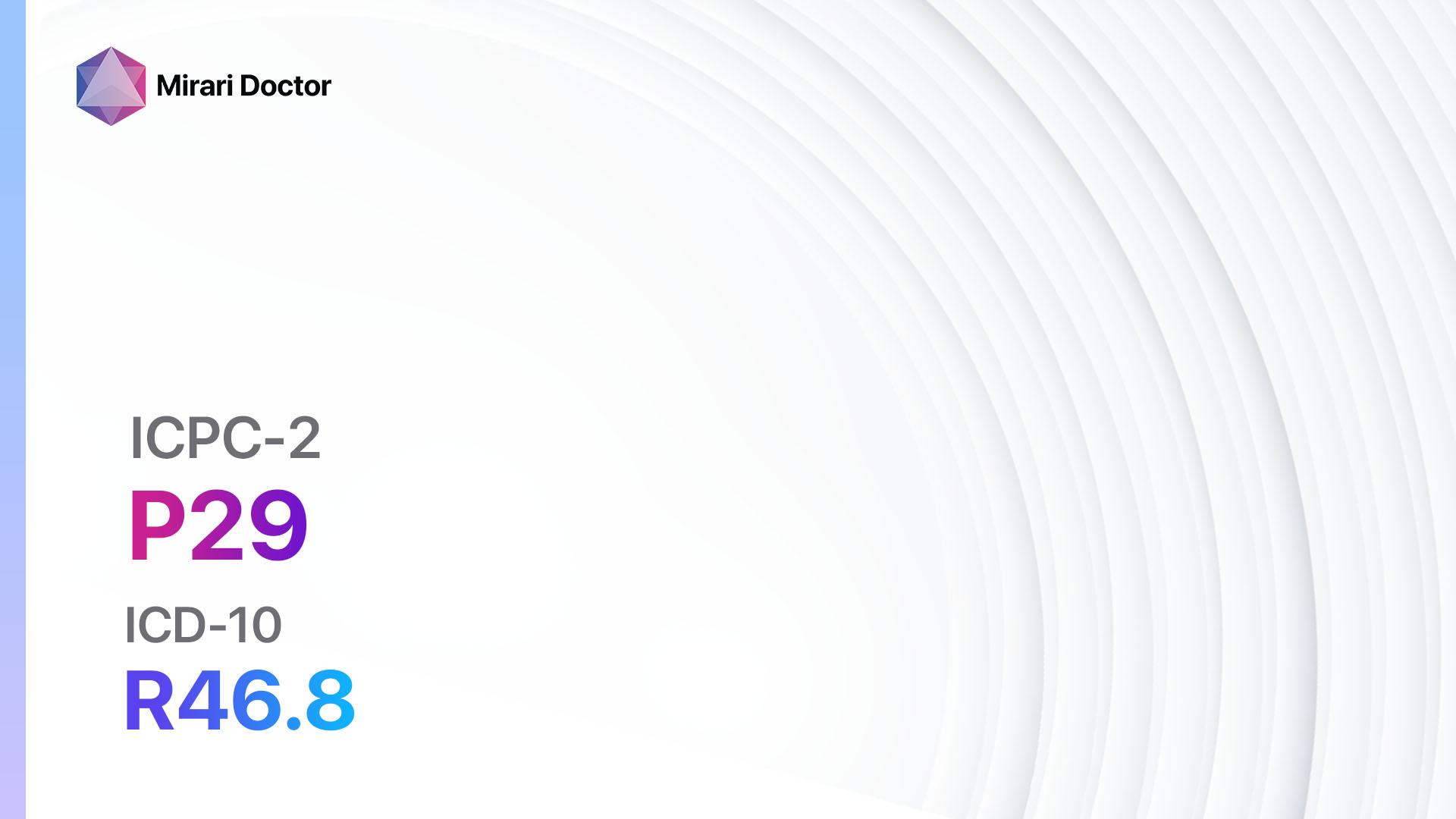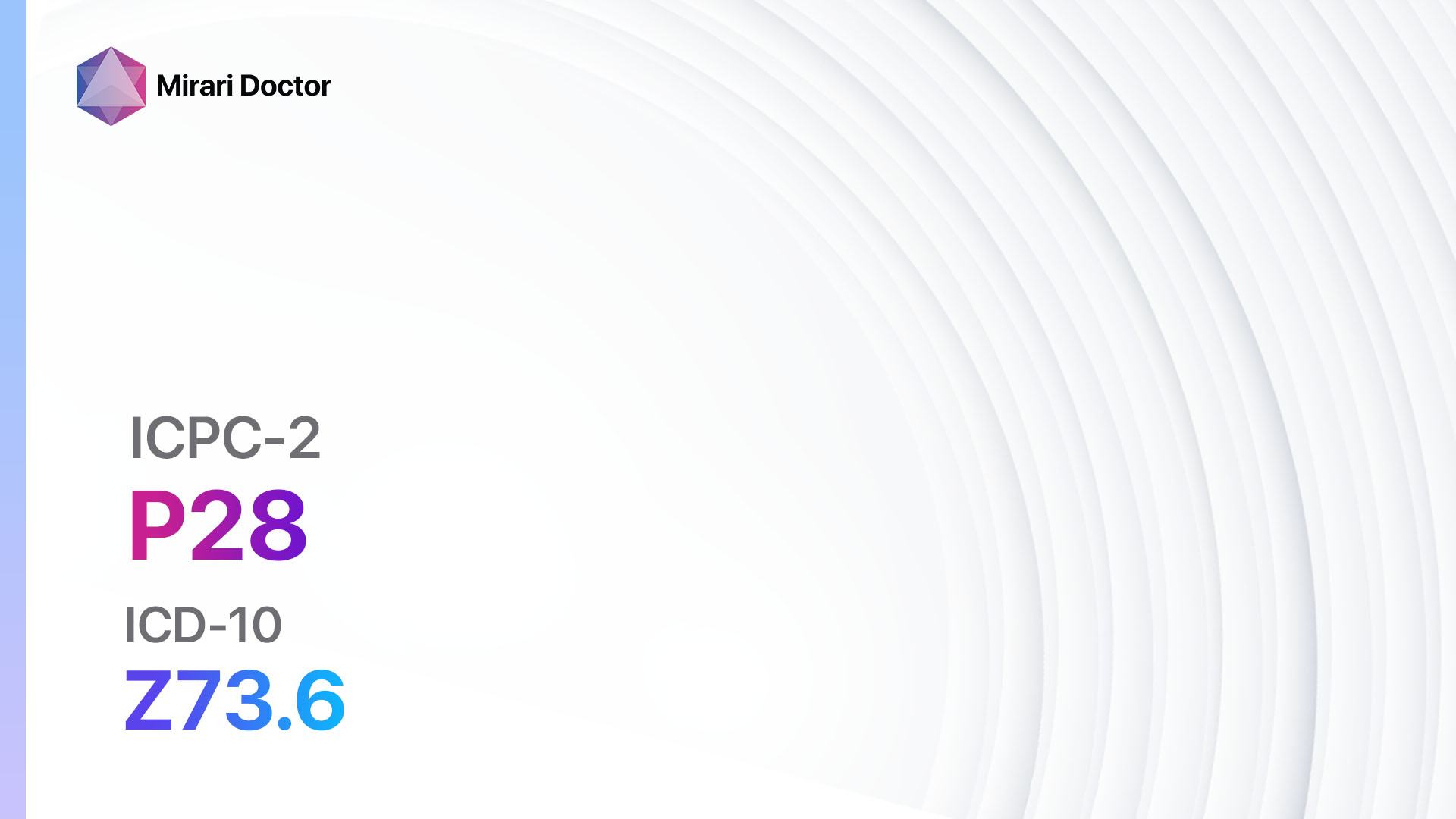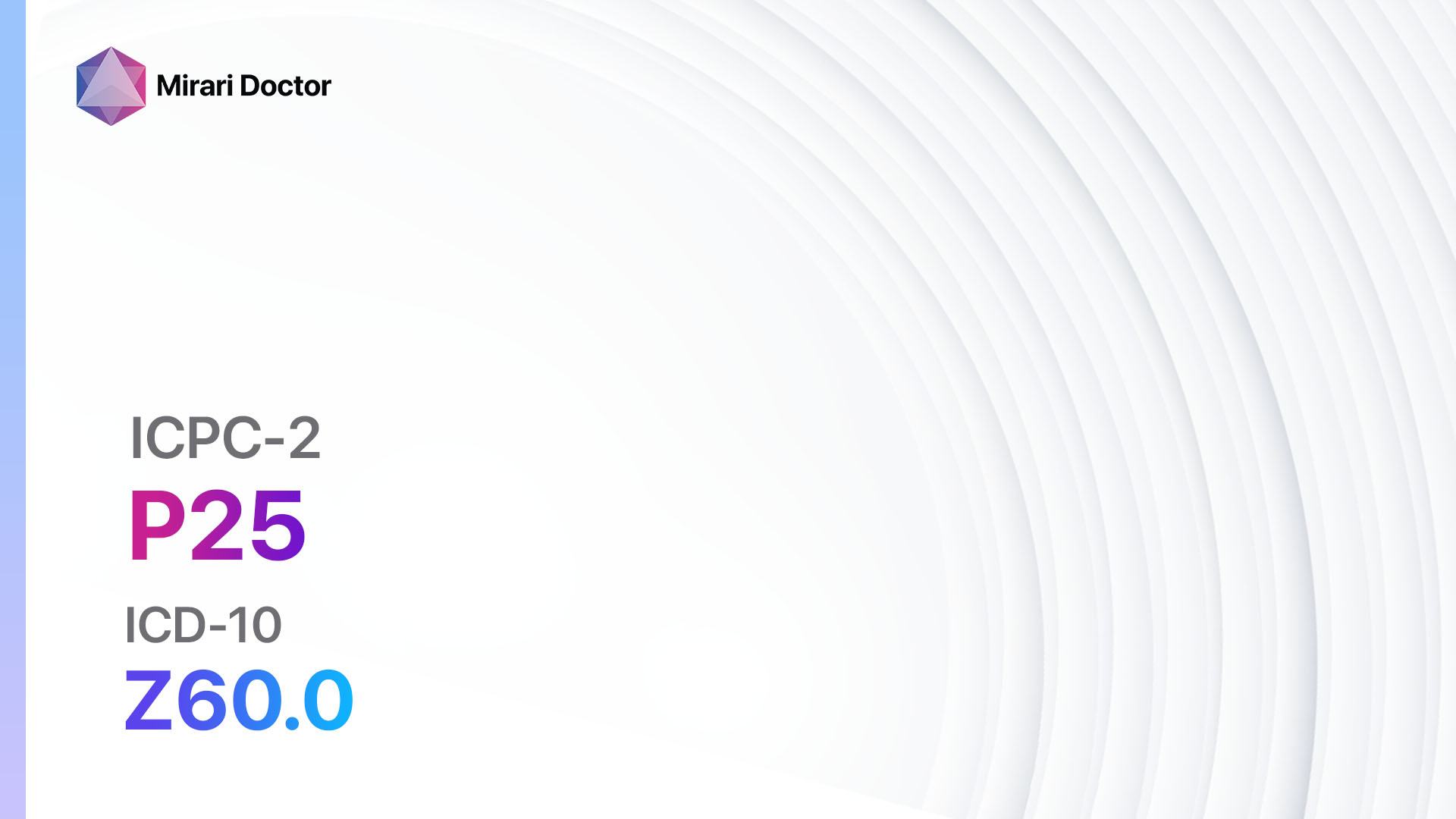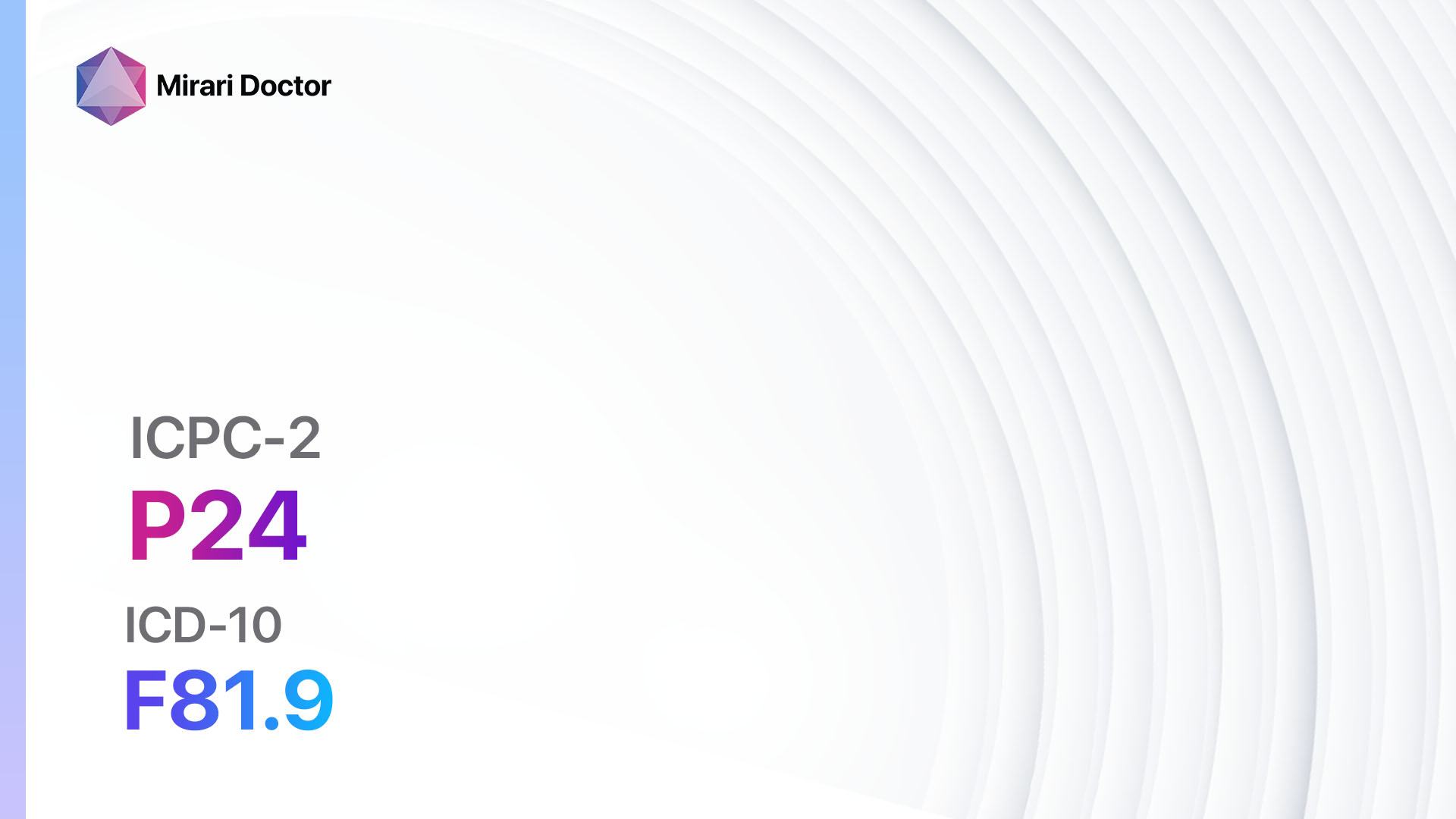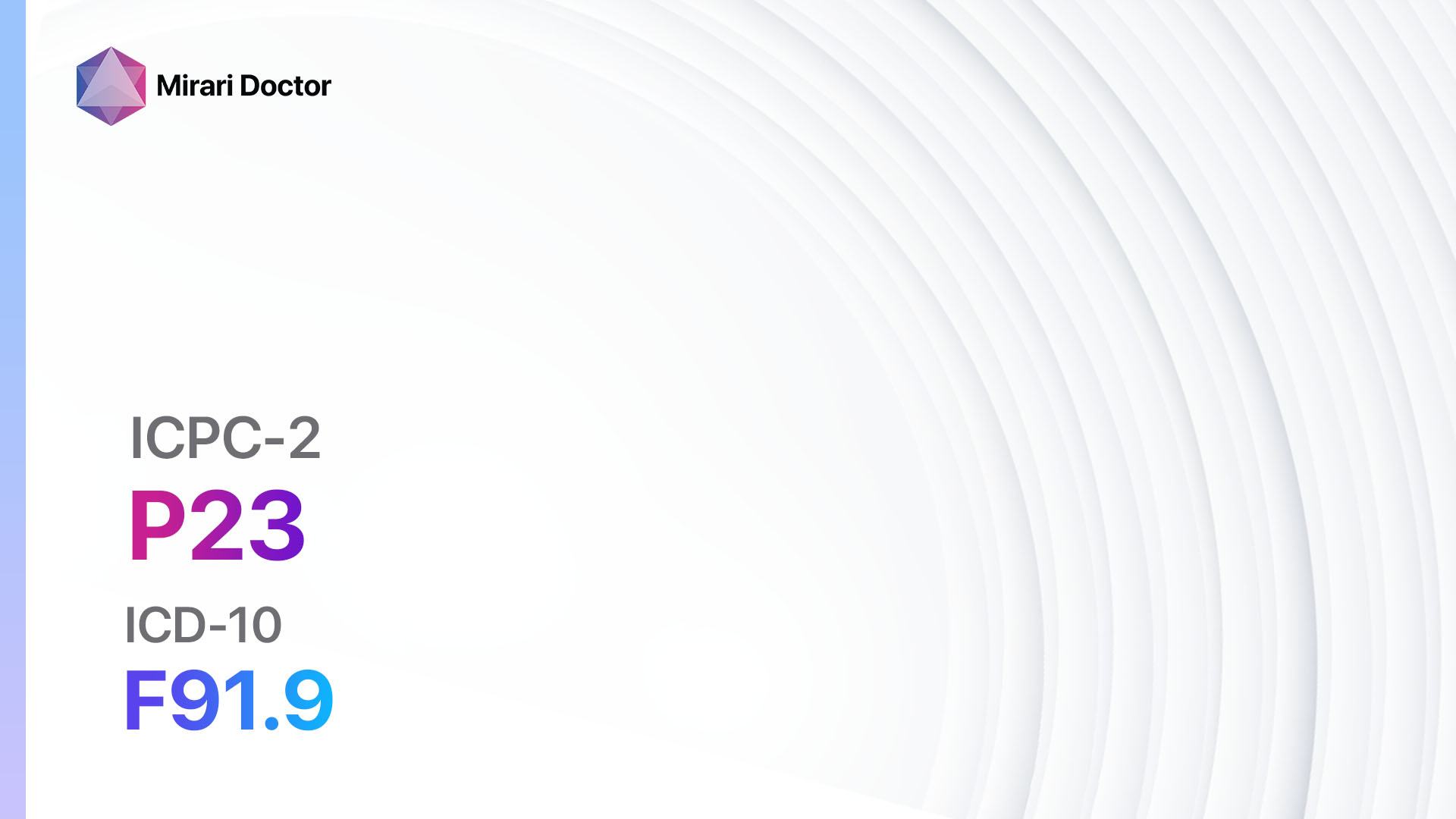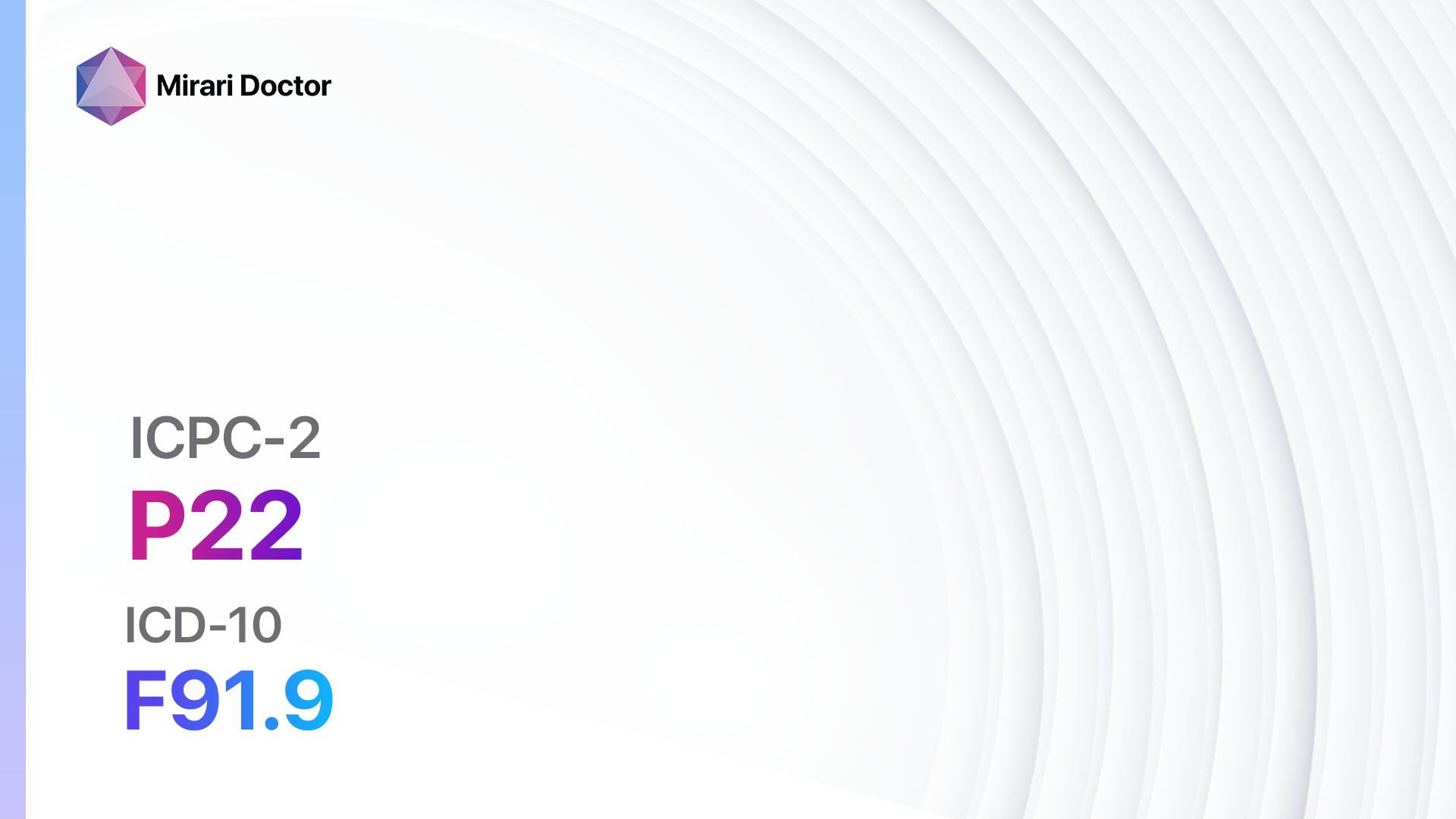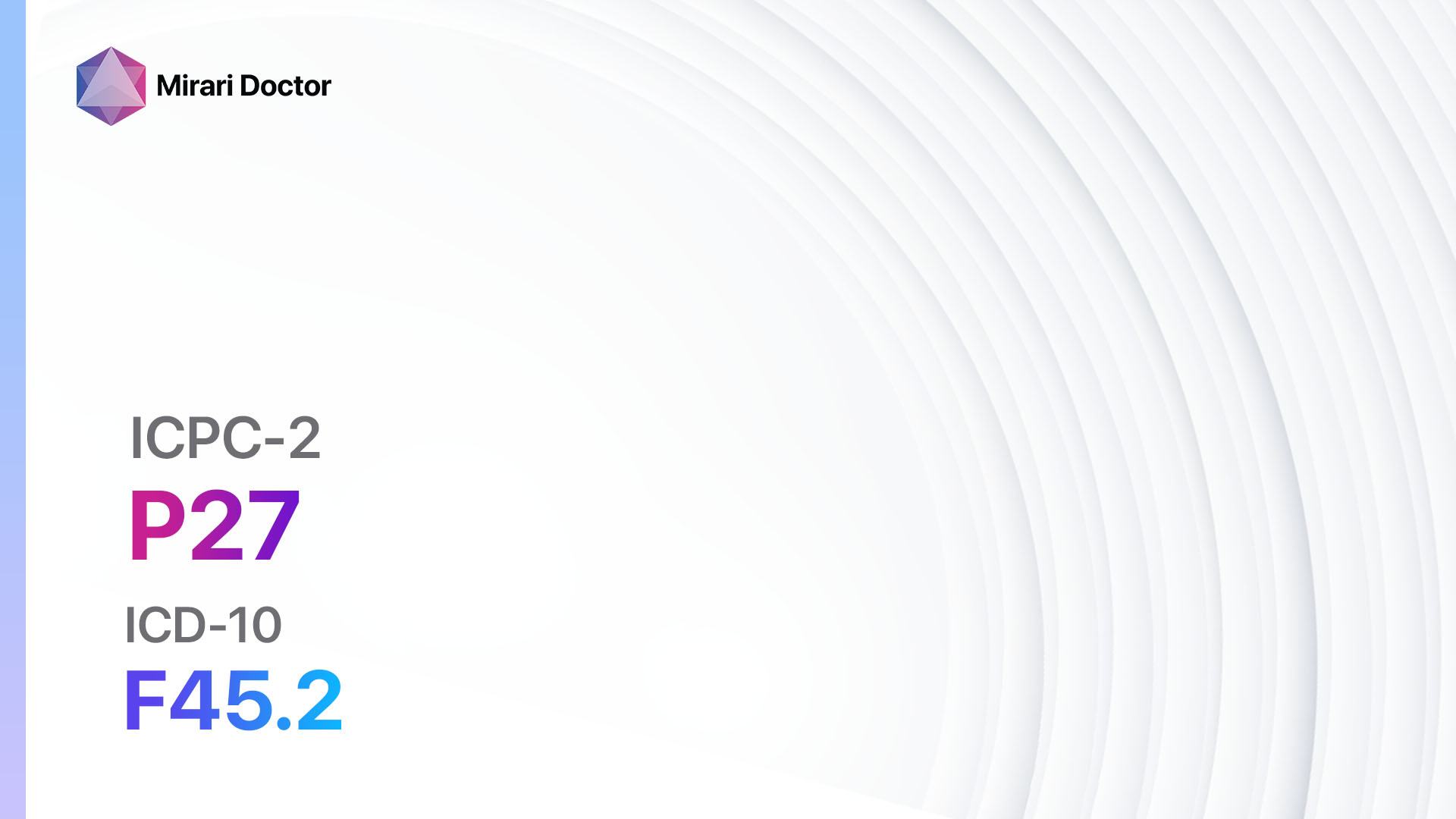
Introduction
Fear of mental disorder, also known as phobophobia, is a condition characterized by an excessive and irrational fear of developing a mental illness[1]. This fear can significantly impact a person’s daily life and may lead to avoidance of situations or activities that are perceived as potentially triggering mental health issues[2]. The aim of this guide is to provide a comprehensive overview of the symptoms, causes, diagnostic steps, possible interventions, and lifestyle interventions for fear of mental disorder.
Codes
Symptoms
- Excessive worry about developing a mental illness[3]
- Persistent fear of losing control or going crazy[4]
- Avoidance of situations or activities that may trigger anxiety about mental health[5]
- Preoccupation with physical symptoms that may be associated with mental illness[6]
- Difficulty concentrating or sleeping due to fear of mental disorder[7]
Causes
- Previous traumatic experiences related to mental health[8]
- Family history of mental illness[9]
- Exposure to negative portrayals of mental illness in media or society[10]
- High levels of stress or anxiety
- Lack of knowledge or understanding about mental health
Diagnostic Steps
Medical History
- Gather information about the patient’s personal and family medical history, including any previous experiences with mental illness.
- Assess the patient’s current symptoms and their impact on daily functioning.
- Identify any risk factors or triggers that may contribute to the fear of mental disorder.
Physical Examination
- Perform a general physical examination to rule out any underlying medical conditions that may be causing or contributing to the fear of mental disorder.
- Pay attention to any physical symptoms that the patient may be experiencing, as these may be related to anxiety or stress.
Laboratory Tests
- There are no specific laboratory tests to diagnose fear of mental disorder. However, blood tests may be ordered to rule out any underlying medical conditions that may be causing or contributing to the symptoms.
Diagnostic Imaging
- Diagnostic imaging is not typically used in the diagnosis of fear of mental disorder.
Other Tests
- Psychological assessments, such as questionnaires or interviews, may be used to assess the severity of the fear of mental disorder and its impact on the patient’s daily life.
- Referral to a mental health professional, such as a psychiatrist or psychologist, may be necessary for a comprehensive evaluation and diagnosis.
Follow-up and Patient Education
- Provide ongoing support and follow-up care to monitor the patient’s progress and address any concerns or questions.
- Offer education and resources about mental health, including information about common mental disorders, treatment options, and coping strategies.
Possible Interventions
Traditional Interventions
Medications:
Top 5 drugs for fear of mental disorder:
- Selective serotonin reuptake inhibitors (SSRIs) (e.g., Fluoxetine, Sertraline):
- Cost: Generic versions can be $10-$50/month.
- Contraindications: Hypersensitivity to SSRIs, concurrent use of monoamine oxidase inhibitors (MAOIs).
- Side effects: Nausea, headache, insomnia.
- Severe side effects: Serotonin syndrome, suicidal thoughts.
- Drug interactions: MAOIs, other serotonergic drugs.
- Warning: May take several weeks to see full effects.
- Benzodiazepines (e.g., Alprazolam, Diazepam):
- Cost: Generic versions can be $10-$50/month.
- Contraindications: Acute narrow-angle glaucoma, concurrent use of opioids.
- Side effects: Drowsiness, dizziness, confusion.
- Severe side effects: Respiratory depression, dependence.
- Drug interactions: Opioids, alcohol.
- Warning: Risk of dependence and withdrawal symptoms.
- Beta-blockers (e.g., Propranolol, Atenolol):
- Cost: Generic versions can be $10-$30/month.
- Contraindications: Severe bradycardia, heart block.
- Side effects: Fatigue, dizziness, bradycardia.
- Severe side effects: Bronchospasm, heart failure.
- Drug interactions: Calcium channel blockers, insulin.
- Warning: Should not be abruptly stopped.
- Antidepressants (e.g., Venlafaxine, Escitalopram):
- Cost: Generic versions can be $10-$50/month.
- Contraindications: Hypersensitivity to antidepressants, concurrent use of MAOIs.
- Side effects: Nausea, headache, sexual dysfunction.
- Severe side effects: Serotonin syndrome, suicidal thoughts.
- Drug interactions: MAOIs, other serotonergic drugs.
- Warning: May take several weeks to see full effects.
- Antipsychotics (e.g., Quetiapine, Risperidone):
- Cost: Generic versions can be $10-$50/month.
- Contraindications: Hypersensitivity to antipsychotics, dementia-related psychosis.
- Side effects: Sedation, weight gain, extrapyramidal symptoms.
- Severe side effects: Neuroleptic malignant syndrome, tardive dyskinesia.
- Drug interactions: Other antipsychotics, CNS depressants.
- Warning: Increased risk of mortality in elderly patients with dementia-related psychosis.
Alternative Drugs:
- Buspirone: An anxiolytic medication that may be used as an alternative to benzodiazepines.
- Hydroxyzine: An antihistamine with anxiolytic properties.
- Pregabalin: An anticonvulsant medication that may be used for anxiety disorders.
- Mirtazapine: An antidepressant that may be used for anxiety and depression.
- Gabapentin: An anticonvulsant medication that may be used for anxiety disorders.
Therapy:
- Cognitive-behavioral therapy (CBT): A type of therapy that focuses on identifying and changing negative thought patterns and behaviors associated with fear of mental disorder. Cost: $100-$200 per session.
- Exposure therapy: A type of therapy that involves gradually exposing the patient to feared situations or thoughts related to mental health in a controlled and supportive environment. Cost: $100-$200 per session.
- Supportive therapy: A type of therapy that provides emotional support and guidance to help the patient cope with their fear of mental disorder. Cost: $100-$200 per session.
- Group therapy: A type of therapy that involves participating in a group setting with others who have similar fears or concerns about mental health. Cost: $50-$100 per session.
Alternative Interventions
- Mindfulness meditation: A practice that involves focusing on the present moment and accepting thoughts and feelings without judgment. Cost: Free (self-guided) or $10-$30 per session (guided).
- Yoga: A mind-body practice that combines physical postures, breathing exercises, and meditation. Cost: $10-$20 per class.
- Acupuncture: May help reduce anxiety and promote relaxation. Cost: $60-$120 per session.
- Herbal supplements: Some herbs, such as passionflower or valerian root, may have calming effects. Cost: Varies depending on the specific supplement.
- Exercise: Regular physical activity has been shown to reduce anxiety and improve overall mental well-being. Cost: Varies depending on the chosen activity (e.g., gym membership, fitness classes).
Lifestyle Interventions
- Stress management techniques: Engaging in activities such as deep breathing exercises, journaling, or practicing relaxation techniques can help reduce anxiety and manage stress. Cost: Free.
- Healthy diet: Eating a balanced diet rich in fruits, vegetables, whole grains, and lean proteins can support overall mental and physical well-being. Cost: Varies depending on food choices.
- Adequate sleep: Getting enough sleep is essential for maintaining good mental health. Establishing a regular sleep routine and practicing good sleep hygiene can help improve sleep quality. Cost: Free.
- Social support: Building a strong support network of friends, family, or support groups can provide emotional support and help alleviate fears about mental health. Cost: Varies depending on activities or group memberships.
- Education and self-help resources: Learning about mental health, attending workshops or seminars, and utilizing self-help resources (e.g., books, online resources) can empower individuals to better understand and manage their fears. Cost: Varies depending on the chosen resources.
It is important to note that the cost ranges provided are approximate and may vary depending on the location and availability of the interventions. It is recommended to consult with healthcare professionals or mental health providers for personalized recommendations and cost estimates.
Mirari Cold Plasma Alternative Intervention
Understanding Mirari Cold Plasma
- Safe and Non-Invasive Treatment: Mirari Cold Plasma is a safe and non-invasive treatment option for various skin conditions. It does not require incisions, minimizing the risk of scarring, bleeding, or tissue damage.
- Efficient Extraction of Foreign Bodies: Mirari Cold Plasma facilitates the removal of foreign bodies from the skin by degrading and dissociating organic matter, allowing easier access and extraction.
- Pain Reduction and Comfort: Mirari Cold Plasma has a local analgesic effect, providing pain relief during the treatment, making it more comfortable for the patient.
- Reduced Risk of Infection: Mirari Cold Plasma has antimicrobial properties, effectively killing bacteria and reducing the risk of infection.
- Accelerated Healing and Minimal Scarring: Mirari Cold Plasma stimulates wound healing and tissue regeneration, reducing healing time and minimizing the formation of scars.
Mirari Cold Plasma Prescription
Video instructions for using Mirari Cold Plasma Device – P27 Fear of mental disorder (ICD-10:F45.2)
| Mild | Moderate | Severe |
| Mode setting: 2 (Wound Healing) Location: 7 (Neuro system & ENT) Morning: 15 minutes, Evening: 15 minutes |
Mode setting: 2 (Wound Healing) Location: 7 (Neuro system & ENT) Morning: 30 minutes, Lunch: 30 minutes, Evening: 30 minutes |
Mode setting: 2 (Wound Healing) Location: 7 (Neuro system & ENT) Morning: 30 minutes, Lunch: 30 minutes, Evening: 30 minutes |
| Mode setting: 7 (Immunotherapy) Location: 1 (Sacrum) Morning: 15 minutes, Evening: 15 minutes |
Mode setting: 7 (Immunotherapy) Location: 1 (Sacrum) Morning: 30 minutes, Lunch: 30 minutes, Evening: 30 minutes |
Mode setting: 7 (Immunotherapy) Location: 1 (Sacrum) Morning: 30 minutes, Lunch: 30 minutes, Evening: 30 minutes |
| Total Morning: 30 minutes approx. $5 USD, Evening: 30 minutes approx. $5 USD |
Total Morning: 60 minutes approx. $10 USD, Lunch: 60 minutes approx. $10 USD, Evening: 60 minutes approx. $10 USD, |
Total Morning: 60 minutes approx. $10 USD, Lunch: 60 minutes approx. $10 USD, Evening: 60 minutes approx. $10 USD, |
| Usual treatment for 7-60 days approx. $70 USD – $600 USD | Usual treatment for 6-8 weeks approx. $1,260 USD – $1,680 USD |
Usual treatment for 3-6 months approx. $2,700 USD – $5,400 USD
|
 |
|
Use the Mirari Cold Plasma device to treat Fear of mental disorder effectively.
WARNING: MIRARI COLD PLASMA IS DESIGNED FOR THE HUMAN BODY WITHOUT ANY ARTIFICIAL OR THIRD PARTY PRODUCTS. USE OF OTHER PRODUCTS IN COMBINATION WITH MIRARI COLD PLASMA MAY CAUSE UNPREDICTABLE EFFECTS, HARM OR INJURY. PLEASE CONSULT A MEDICAL PROFESSIONAL BEFORE COMBINING ANY OTHER PRODUCTS WITH USE OF MIRARI.
Step 1: Cleanse the Skin
- Start by cleaning the affected area of the skin with a gentle cleanser or mild soap and water. Gently pat the area dry with a clean towel.
Step 2: Prepare the Mirari Cold Plasma device
- Ensure that the Mirari Cold Plasma device is fully charged or has fresh batteries as per the manufacturer’s instructions. Make sure the device is clean and in good working condition.
- Switch on the Mirari device using the power button or by following the specific instructions provided with the device.
- Some Mirari devices may have adjustable settings for intensity or treatment duration. Follow the manufacturer’s instructions to select the appropriate settings based on your needs and the recommended guidelines.
Step 3: Apply the Device
- Place the Mirari device in direct contact with the affected area of the skin. Gently glide or hold the device over the skin surface, ensuring even coverage of the area experiencing.
- Slowly move the Mirari device in a circular motion or follow a specific pattern as indicated in the user manual. This helps ensure thorough treatment coverage.
Step 4: Monitor and Assess:
- Keep track of your progress and evaluate the effectiveness of the Mirari device in managing your Fear of mental disorder. If you have any concerns or notice any adverse reactions, consult with your health care professional.
Note
This guide is for informational purposes only and should not replace the advice of a medical professional. Always consult with your healthcare provider or a qualified medical professional for personal advice, diagnosis, or treatment. Do not solely rely on the information presented here for decisions about your health. Use of this information is at your own risk. The authors of this guide, nor any associated entities or platforms, are not responsible for any potential adverse effects or outcomes based on the content.
Mirari Cold Plasma System Disclaimer
- Purpose: The Mirari Cold Plasma System is a Class 2 medical device designed for use by trained healthcare professionals. It is registered for use in Thailand and Vietnam. It is not intended for use outside of these locations.
- Informational Use: The content and information provided with the device are for educational and informational purposes only. They are not a substitute for professional medical advice or care.
- Variable Outcomes: While the device is approved for specific uses, individual outcomes can differ. We do not assert or guarantee specific medical outcomes.
- Consultation: Prior to utilizing the device or making decisions based on its content, it is essential to consult with a Certified Mirari Tele-Therapist and your medical healthcare provider regarding specific protocols.
- Liability: By using this device, users are acknowledging and accepting all potential risks. Neither the manufacturer nor the distributor will be held accountable for any adverse reactions, injuries, or damages stemming from its use.
- Geographical Availability: This device has received approval for designated purposes by the Thai and Vietnam FDA. As of now, outside of Thailand and Vietnam, the Mirari Cold Plasma System is not available for purchase or use.
References
- American Psychiatric Association. (2013). Diagnostic and statistical manual of mental disorders (5th ed.). https://doi.org/10.1176/appi.books.9780890425596
- Starcevic, V. (2005). Fear of mental illness: An emerging public health issue. Australian and New Zealand Journal of Psychiatry, 39(8), 600-602. https://doi.org/10.1080/j.1440-1614.2005.01657.x
- Rachman, S. (2012). Health anxiety disorders: A cognitive construal. Behaviour Research and Therapy, 50(7-8), 502-512. https://doi.org/10.1016/j.brat.2012.05.001
- Asmundson, G. J., & Taylor, S. (2020). How health anxiety influences responses to viral outbreaks like COVID-19: What all decision-makers, health authorities, and health care professionals need to know. Journal of Anxiety Disorders, 71, 102211. https://doi.org/10.1016/j.janxdis.2020.102211
- Abramowitz, J. S., & Braddock, A. E. (2011). Hypochondriasis and health anxiety. Hogrefe Publishing.
- Tyrer, P., Cooper, S., Crawford, M., Dupont, S., Green, J., Murphy, D., … & Tyrer, H. (2011). Prevalence of health anxiety problems in medical clinics. Journal of Psychosomatic Research, 71(6), 392-394. https://doi.org/10.1016/j.jpsychores.2011.07.004
- Salkovskis, P. M., Rimes, K. A., Warwick, H. M. C., & Clark, D. M. (2002). The Health Anxiety Inventory: Development and validation of scales for the measurement of health anxiety and hypochondriasis. Psychological Medicine, 32(5), 843-853. https://doi.org/10.1017/S0033291702005822
- Reiser, S. J., McMillan, K. A., Wright, K. D., & Asmundson, G. J. (2014). Adverse childhood experiences and health anxiety in adulthood. Child Abuse & Neglect, 38(3), 407-413. https://doi.org/10.1016/j.chiabu.2013.08.007
- Noyes, R., Carney, C. P., Hillis, S. L., Jones, L. E., & Langbehn, D. R. (2005). Prevalence and correlates of illness worry in the general population. Psychosomatics, 46(6), 529-539. https://doi.org/10.1176/appi.psy.46.6.529
- Hoffner, C. A., & Cohen, E. L. (2015). Portrayal of mental illness on the TV series Monk: Presumed influence and consequences of exposure. Health Communication, 30(10), 1046-1054. https://doi.org/10.1080/10410236.2014.917840
Related articles
Made in USA


